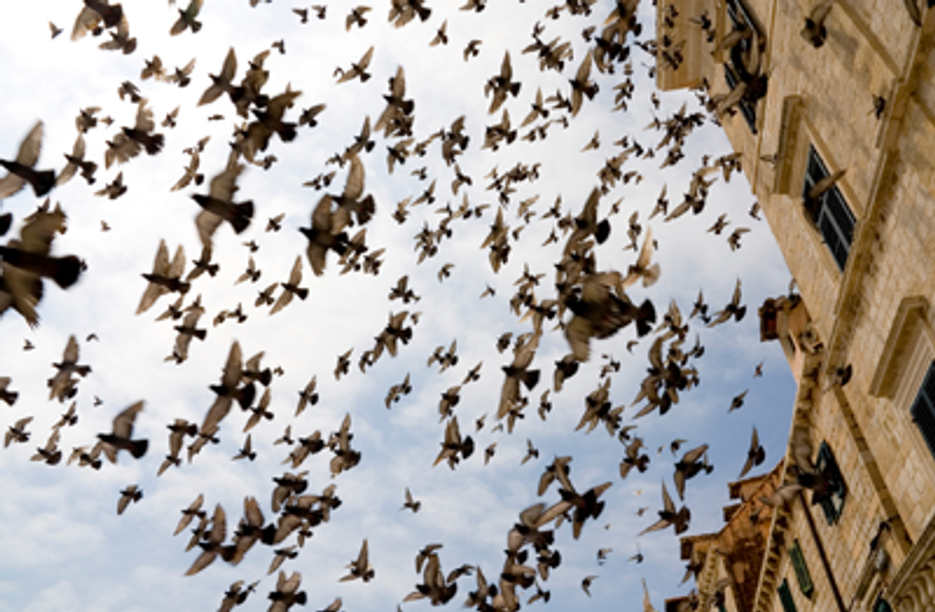Please add the schema tags below
Get rid of pest birds with Bird Deterrent Foil
Proper bird control strategies need to be implemented before certain types of birds become a huge problem. For example, grackles and starlings are birds that flock together in large groups. There could be thousands of these birds that take over your trees and structures in no time at all.
The bird’s droppings will leave a nasty mess on the buildings, walkways, rooftops and the grassy areas. The droppings are not just a dirty site, but they are very acidic and the uric acid in the droppings eventually lead to corrosion on just about every surface they land on. This includes stone, masonry and metals, as well as paint, canvas and wood. And all those nesting materials, debris and feathers can create fire hazards, especially if nests are built too close to wiring or electrical equipment.
The inundation of bird droppings creates health hazards. The droppings are loaded with bacteria, fungal agents and ectoparasites. These are found in a majority of droppings and can result in the transmission of serious diseases such as encephalitis, toxoplasmosis, histoplasmosis, salmonella and meningitis. The nesting sites and droppings can be full of mites and bed bugs. They can harbor over forty types of parasites and can host over sixty types of infectious diseases. Most people would never tolerate a colony of rats in their living environment, so why are their flocks of birds on the property that have a similar health risk?
When the droppings gather on the entryway or walkway they can create a slip and fall hazard. This is especially serious when birds have taken over a place of business. The result of this could be very costly and include time-consuming litigation.
Does Aluminum Foil Scare Birds Away?
Although we can't say that aluminum foil is the best visual scare tactic to use for birds, the effort is there. Smaller birds are easily scared away by visual deterrents that use reflection and movement. So, in theory tin foil can help deter repel birds but it is definitely not the recommended solution.
What Should You Use Instead of Aluminum Foil?
Thankfully, there are effective bird control strategies available to property owners and home owners who do not want a grackle and starling invasion on their property.
The Answer? Holographic flash tape is a type of bird deterrent foil that will scare pest birds away from your trees and property. This type of bird control strategy is one of the simplest and most cost-effective ways to get rid of birds. The tape is designed from commercial-grade Mylar. The holographic surface reflects light and the tape makes a crackling sound when it moves with the breeze. This creates both and audio and visual distraction zone that will disorient and fright the birds. They will fly away to a different location.
- Roll Size: 2-in by 150-ft
- Made from durable Mylar material
The bird deterrent foil can be placed in fruit trees, gardens, vineyards, pool areas, gazebos, overhangs, patios and boats. It will not only deter the grackles and starlings, but will also be effective in deterring other pest birds such as pigeons, woodpeckers, seagulls, sparrows, swallows, crows, blackbirds, ducks, geese and more. The tape is cut into strips from a roll that is 150’ x 2” wide. It is then easily attached to the branches, vines, trellises and other visible elevated structures.
What Else is There?
Want to learn more about how visual deterrents scare birds away or you just didn't like how flash tape looks? Bird B Gone carries a variety of visual deterrents that are great for scaring those pest birds away.
People Also Read: How Visual Bird Deterrents Keep Pest Birds Away
Other deterrents can be used along side the holographic flash tape such as physical deterrents like bird netting and solar bird repellers. Using a couple different types of deterrents in tandem keeps the area fresh, and helps keep the birds confused so they do not get too used to one type of product.

